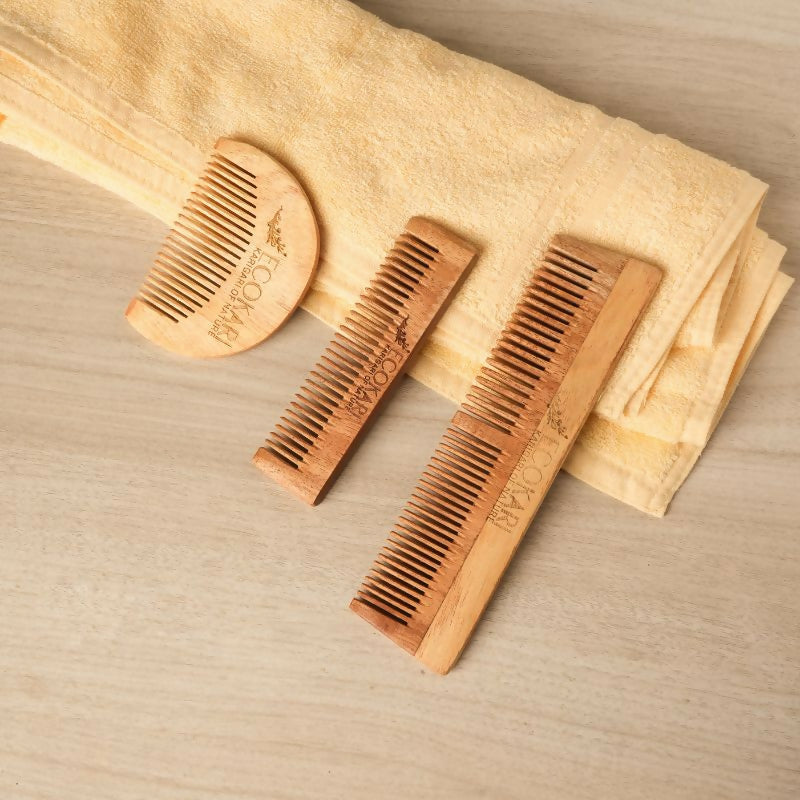Satat - Crafting jewellery with reclaimed wood
Founder and Brand Journey
SATAT is a brand that offers sustainably crafted jewellery for the conscious consumer. Founded by designer Radhika Malhotra, SATAT’s products are at the confluence of design, craft and sustainability. Its designs celebrate Indian craftsmanship and materials by way of timeless creations.
When Radhika, a fashion and lifestyle accessories’ designer by education and training, set out to establish her brand, she knew that it needed to be one that has sustainability cemented in its core. “Being a conscious consumer myself, I wanted my brand to solely offer products that are in harmony with our environment”, stresses Radhika. And to suitably embody this ideology, she named the brand SATAT, a Sanskrit word for something that is “continuous or cyclic in nature”.
Design Process
For her products, Radhika takes exceptional care to ensure that every step in their making has been thoroughly thought out. Her process starts right from sourcing the right kind of raw materials to inspecting how long SATAT products can last and whether they can, in fact, be disposed of responsibly. This needed to fit within the parameters of minimal usage of natural resources, creating as little waste as possible and enabling recycling of waste, if any.
“With regards to materials, I have always been fascinated by natural materials and the challenge they provide to create something substantial out of less.” Shared Radhika. A common thread running through all of SATAT’s collections is the teak wood, salvaged from construction sites, that acts as the canvas for Radhika’s designs. Aiding her through this process are master block making craftsmen from Jaipur who undertake laborious and tedious steps (as many as 20 at times) to handcraft the jewellery.
The carefully etched wooden pieces are then painted with dyes made out of organic materials like kohl, turmeric and indigo. Finally, they get cast in gold/silver plated brass or further embellished with additional features before becoming attractive ornaments.
Radhika also educated us that caring for jewellery made out of natural materials is no different from jewellery made out of conventional materials. They are best stored in a dry place that is not exposed to direct sunlight. She assures that if appropriate care has been taken then SATAT pieces can last really long and age gracefully. And in the event that the colour does wear off, SATAT offers its customers a re-shine service for a nominal charge.
Design Inspiration for Collections
For SATAT’s collections, Radhika draws inspiration from unique sources - ancient tribal designs, geometric patterns and an intersection of both. Infused with a minimal and modern aesthetic, each of the collections consist of light and easy-to-wear pieces.
The Charcoal collection, heroes the earthy charcoal and grey (derived by combining kohl and gypsum) colours on designs that are incredibly modern and yet display a resounding Aztec tribal influence. Similarly, the Tribal Saga collection, is another chapter in this fantastic marriage of two very distinct design categories. And then there is the Haldi & Indigo collection which juxtaposes muted shades of turmeric and indigo on designs of varying degrees of intricacy. Even the Catalyst, Neel and Haze collections promote the chosen narrative and continue to offer absolutely refreshing perspectives on the same design inspirations.
(Seen here: Pentaluck Earrings from the Haldi Collection)
Elimination of Plastic Packaging
SATAT is a brand that truly delivers on its promise to provide consciously made products. “Sustainability can seem like a daunting practice but it wasn't too difficult for us to adapt as we chose to commit to it as our chosen way of life. Once decided upon as a non-negotiable, sustainability then got easily incorporated into every choice we made in the company” reflects Radhika.
With a sense of deep satisfaction, she further shared that they have completely done away with the use of plastic in their primary and secondary packaging. Plastic containers and packets are typically the preferred way of packaging jewellery as they prevent the pieces from getting tarnished. But SATAT’s products are packaged in pouches made out of fabric scraps picked up from textile markets. These pouches are just as suitable to store jewellery and keep the lustre intact.
In addition, even the traditional product tags are replaced with tags made out of bio-degradable paper that have seeds embedded within. So a consumer can plant these tags to grow saplings of herbs, vegetables or flowers.
Vision and Way forward
Since inception, consumers have wonderfully taken to SATAT’s jewellery and showered the brand with immense love. When we asked Radhika about the way forward for SATAT, she informs us with certainty that it will definitely explore more materials and product categories in the future. “But the larger vision and hope”, she says “is to make a difference!”. With the conviction that designers have the ability to influence consumers’ attitudes and habits, Radhika forges forward with her designs and concepts to expedite that change.
-
Image Credits - SATAT
Feature Credits - Harshitha Venati
--







Leave a comment